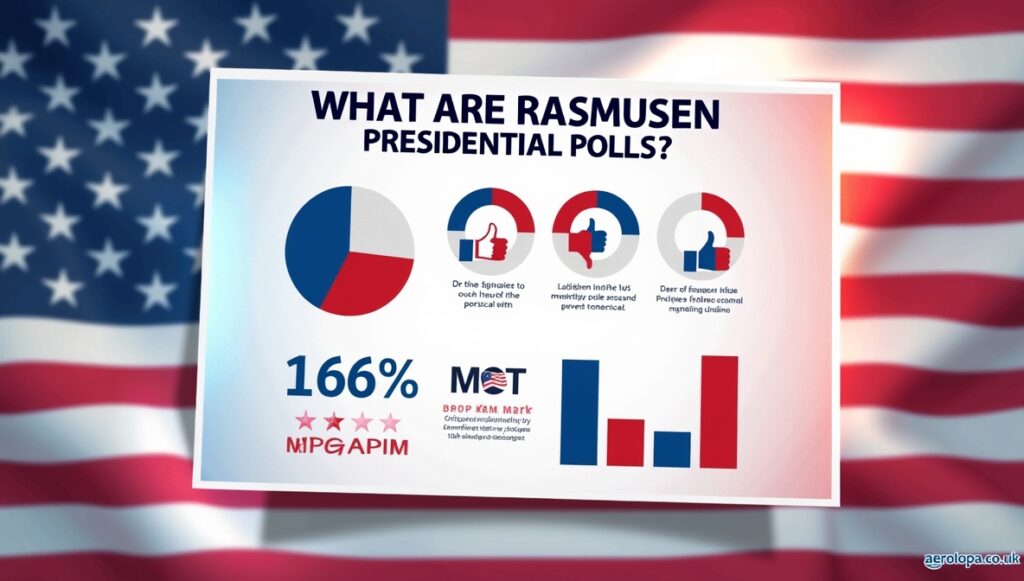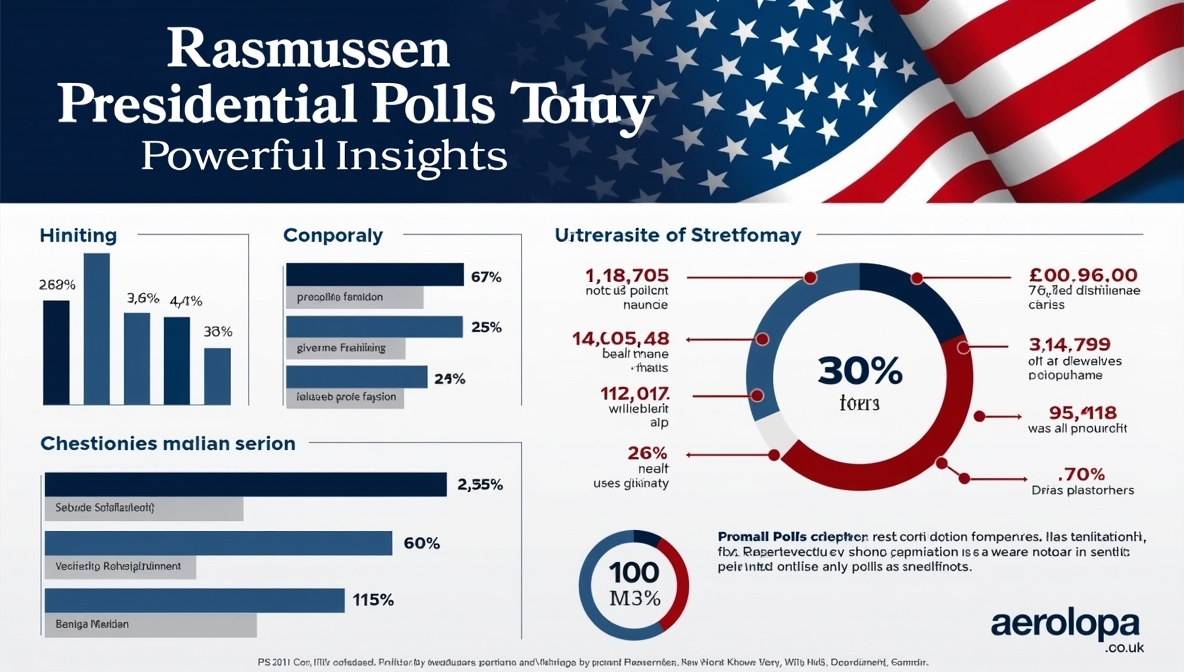Election seasons bring excitement, debates, and—most importantly—polling numbers that shape how people view the race. Among the many polling organizations, the Rasmussen presidential polls today often grab attention for their speed, regular updates, and unique methodology. Whether you are a political enthusiast, journalist, student, or everyday voter, understanding Rasmussen polls is key to interpreting the bigger picture of U.S. elections.
This article provides a deep dive into Rasmussen presidential polls today—what they are, how they work, why they matter, and how you can use the insights responsibly.
What Are Rasmussen Presidential Polls?

Rasmussen Reports is a well-known polling company that conducts surveys on politics, elections, and public opinion in the United States. Their presidential tracking polls are updated frequently and are widely cited by media outlets.
Key facts about Rasmussen polls:
- Founded by pollster Scott Rasmussen in 2003.
- Known for daily tracking polls, especially during presidential elections.
- Focuses on likely voters rather than all adults, which some argue gives a closer snapshot of election outcomes.
- Covers approval ratings, head-to-head matchups, and issue-based surveys.
Why Rasmussen Presidential Polls Today Matter
When people search for Rasmussen presidential polls today, they usually want real-time data on:
- Current presidential approval ratings
- Head-to-head matchups between candidates
- Public perception of national issues like the economy, immigration, or healthcare
These polls influence:
- Media narratives – News outlets use Rasmussen numbers to frame election coverage.
- Campaign strategies – Politicians adjust their messaging based on voter sentiment.
- Voter perceptions – Polls shape how people see the race, sometimes creating momentum for candidates.
How Rasmussen Conducts Presidential Polls
Understanding methodology helps in reading the numbers critically. Rasmussen typically:
- Uses automated phone surveys and online panels.
- Polls a sample of likely voters, not just registered voters.
- Adjusts data using demographic weighting (age, race, gender, political affiliation).
This approach sometimes produces results that differ from other pollsters like Gallup or Pew Research. Critics argue Rasmussen may lean slightly conservative, while supporters say the focus on likely voters makes it more accurate for predicting elections.
Rasmussen Presidential Polls Today vs. Other Polls
When comparing Rasmussen’s results with other pollsters, you may notice differences:
- Rasmussen often shows higher approval ratings for Republican presidents than other polls.
- Mainstream pollsters like CNN, Pew, or ABC may show slightly different numbers due to methodology.
- Averaged poll data (from sites like RealClearPolitics or FiveThirtyEight) provides a balanced picture by combining multiple polls.
For readers, this means Rasmussen presidential polls today should be seen as one data point, not the whole story.
Current Trends in Rasmussen Presidential Polls Today
While exact numbers change daily, here’s what Rasmussen’s presidential polls usually track:
- Presidential Approval Rating – Measures how likely voters feel about the president’s performance.
- Head-to-Head Matchups – Compares how two or more presidential candidates fare against each other.
- Issue-Specific Polling – Surveys voter opinions on hot topics such as inflation, jobs, immigration, and foreign policy.
- Party Favorability – Tracks how the Republican and Democratic parties are viewed by the public.
How to Read Rasmussen Presidential Polls Today
Polls can be tricky if not read carefully. Here’s how to interpret them:
- Look at sample size – Larger samples usually mean more reliable results.
- Check the margin of error – A 3% margin of error means results can swing either way.
- Compare trends over time – A single poll is just a snapshot. Look at weekly or monthly movement.
- Cross-check with other polls – Balance Rasmussen data with results from other pollsters.
Criticisms of Rasmussen Presidential Polls
Like any polling organization, Rasmussen has its critics:
- Some say it leans more favorable to Republicans.
- Automated calling methods may exclude younger voters or those without landlines.
- Online panel participation can introduce bias.
Despite this, Rasmussen polls remain highly cited because they are frequent, transparent, and timely.
Why Rasmussen Polls Are Popular
- Daily updates give readers fresh insights.
- Focused on likely voters, which some analysts argue is more predictive.
- Easy-to-read reports make complex data understandable.
- Historical track record shows both hits and misses, but enough accuracy to remain influential.
Practical Uses of Rasmussen Presidential Polls Today
How can you, as a reader, benefit from following Rasmussen polls?
- Stay informed – Know where candidates stand with the public.
- Predict trends – See how events (debates, scandals, economic changes) affect voter sentiment.
- Educational resource – Great for students learning about polling, statistics, or political science.
- Balanced perspective – Use it alongside other polls for a full picture.
The Future of Rasmussen Presidential Polls

As elections evolve, so does polling. Rasmussen is expected to:
- Increase use of online surveys to capture younger voters.
- Refine data weighting for accuracy.
- Expand beyond approval ratings into more issue-focused polling.
For readers, this means Rasmussen presidential polls today will continue to be a fast, influential, and widely debated snapshot of American politics.
Conclusion
When it comes to political data, few sources spark as much conversation as the Rasmussen presidential polls today. They offer quick, digestible insights into approval ratings, election matchups, and public opinion on key issues. While not without critics, Rasmussen remains a valuable tool for anyone who wants to stay ahead in understanding the political landscape.
To get the most value, readers should follow trends, compare polls, and interpret results critically. In a fast-changing political climate, Rasmussen polls remain a window into the minds of American voters—today and in the future.




